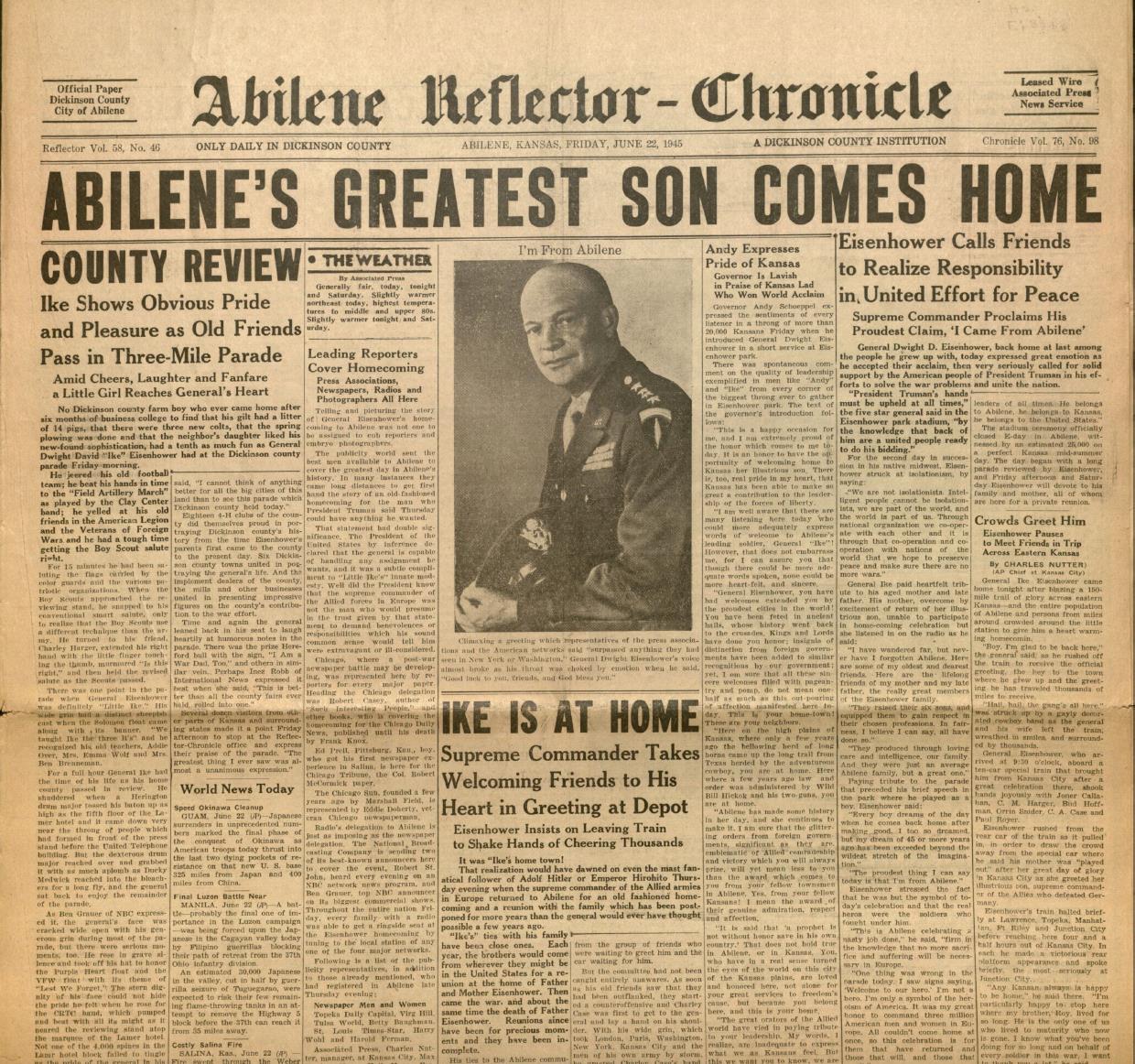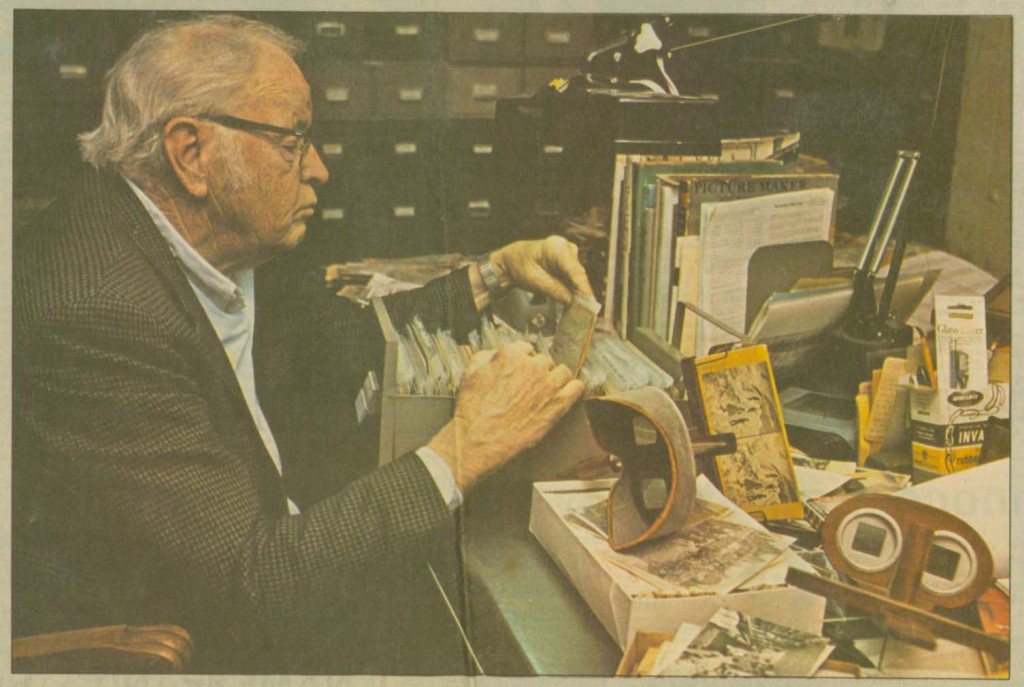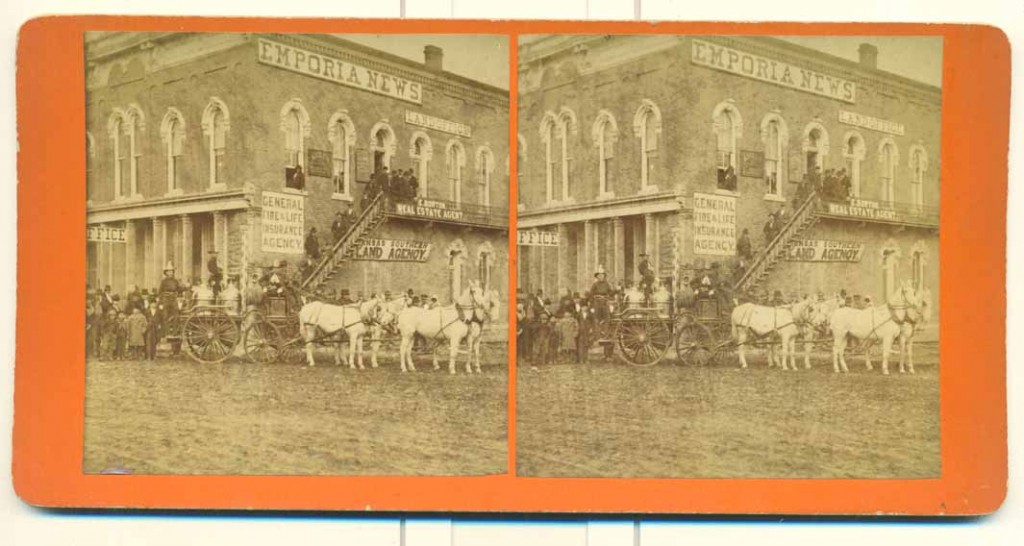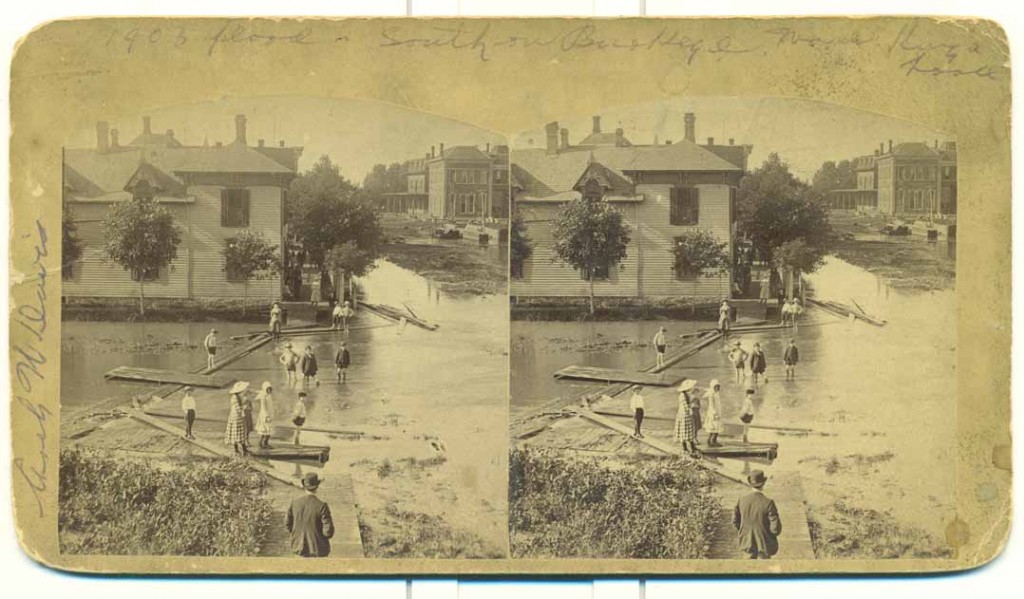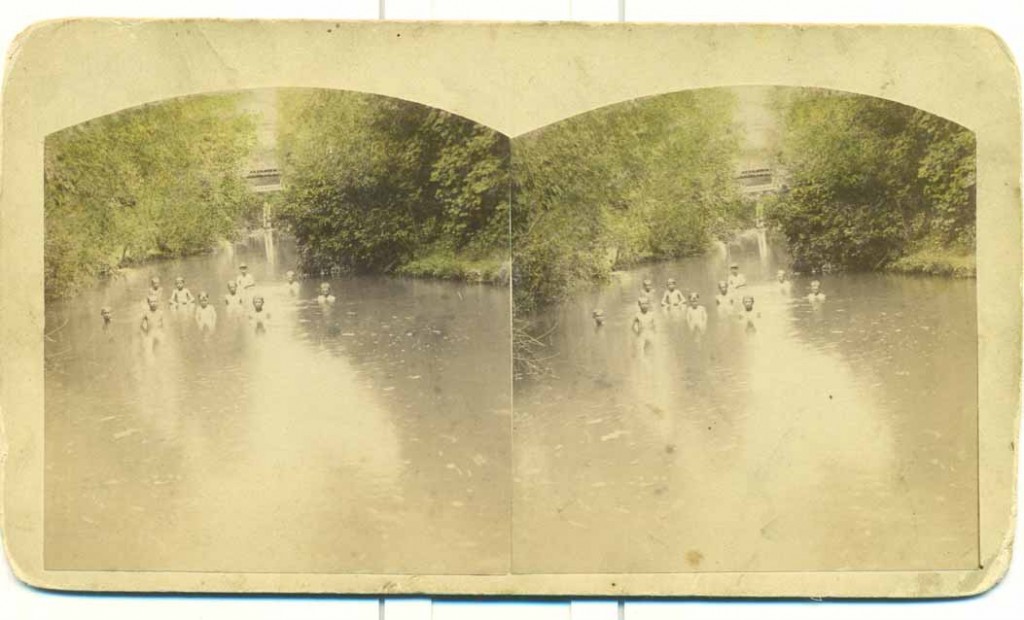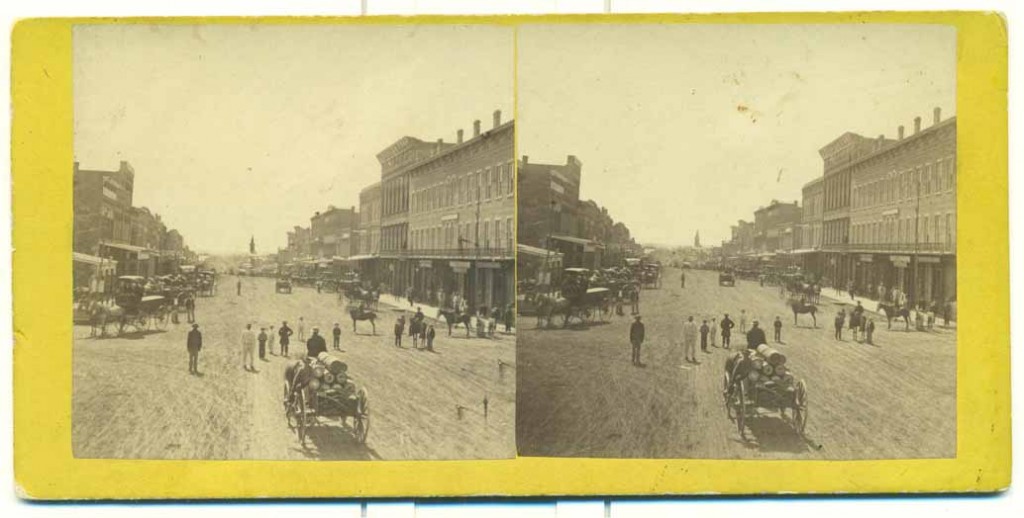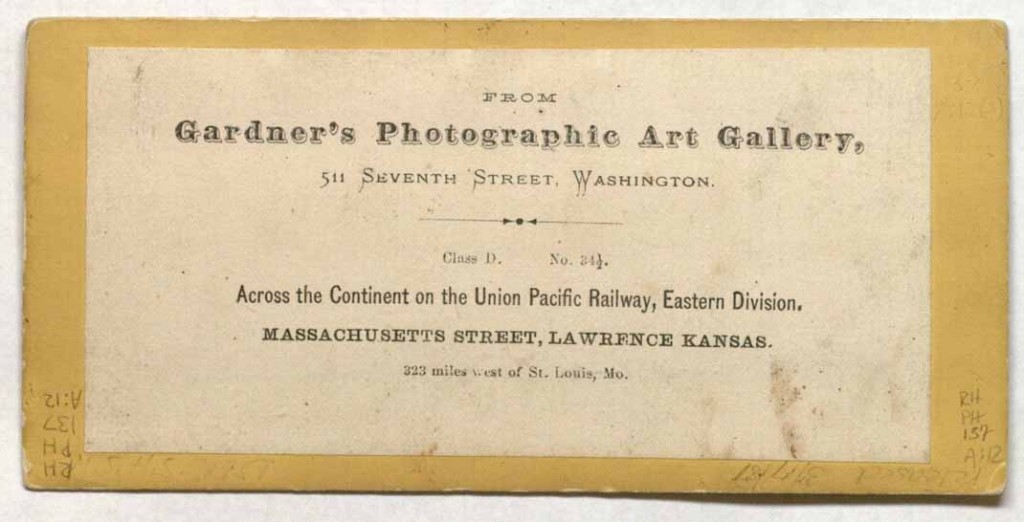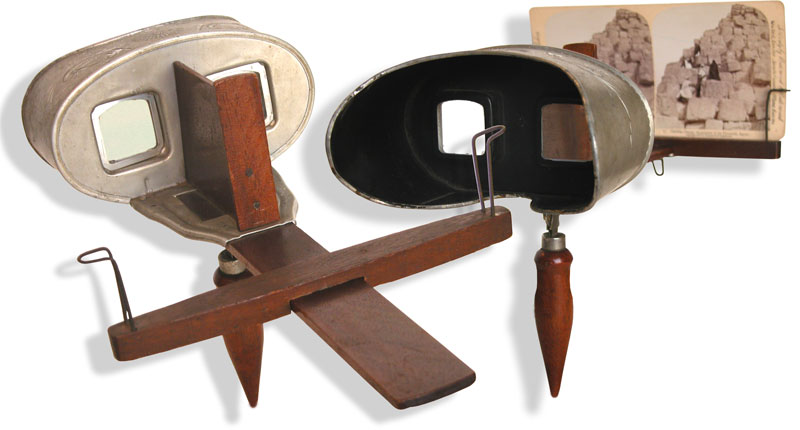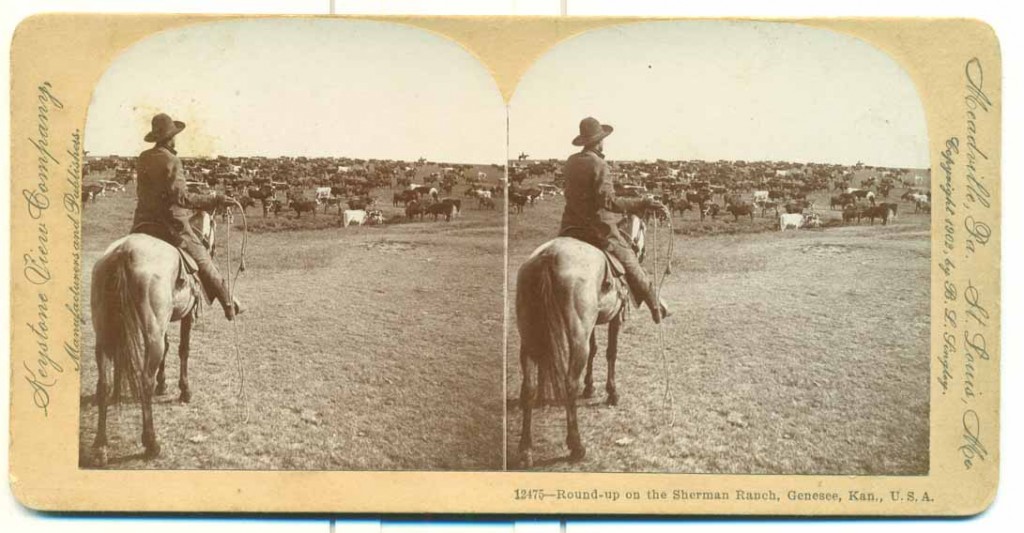President Eisenhower: Abilene’s Greatest Son
February 20th, 2017Abilene, Kansas is a small city of under 7,000 people, but it managed to produce one of the most influential U.S. presidents. The only president to come from Kansas, Dwight D. Eisenhower served 8 years in the office from 1953-1961. Here he worked ceaselessly to deescalate the cold war and poured his energies into working towards world peace. But before he became the 34th President of the United States, Eisenhower served as the commanding general of the U.S. troops in Europe during World War II. After Victory in Europe Day on May 8, 1945, then General Eisenhower returned to his hometown of Abilene. Here at the Spencer Research Library, as a part of our Kansas Collection, we have General Eisenhower’s Homecoming train brochure signed by the man himself and the Abilene Reflector-Chronicle issue reporting on his historic return. If you’re interested in learning more about our nation’s only president from Kansas, check out this great entry in the Kansas Historical Soceity’s Kansapedia, book a trip to the Dwight D. Eisenhower Presidential Library, Museum and Boyhood Home, or come visit us here at Spencer Research Library!
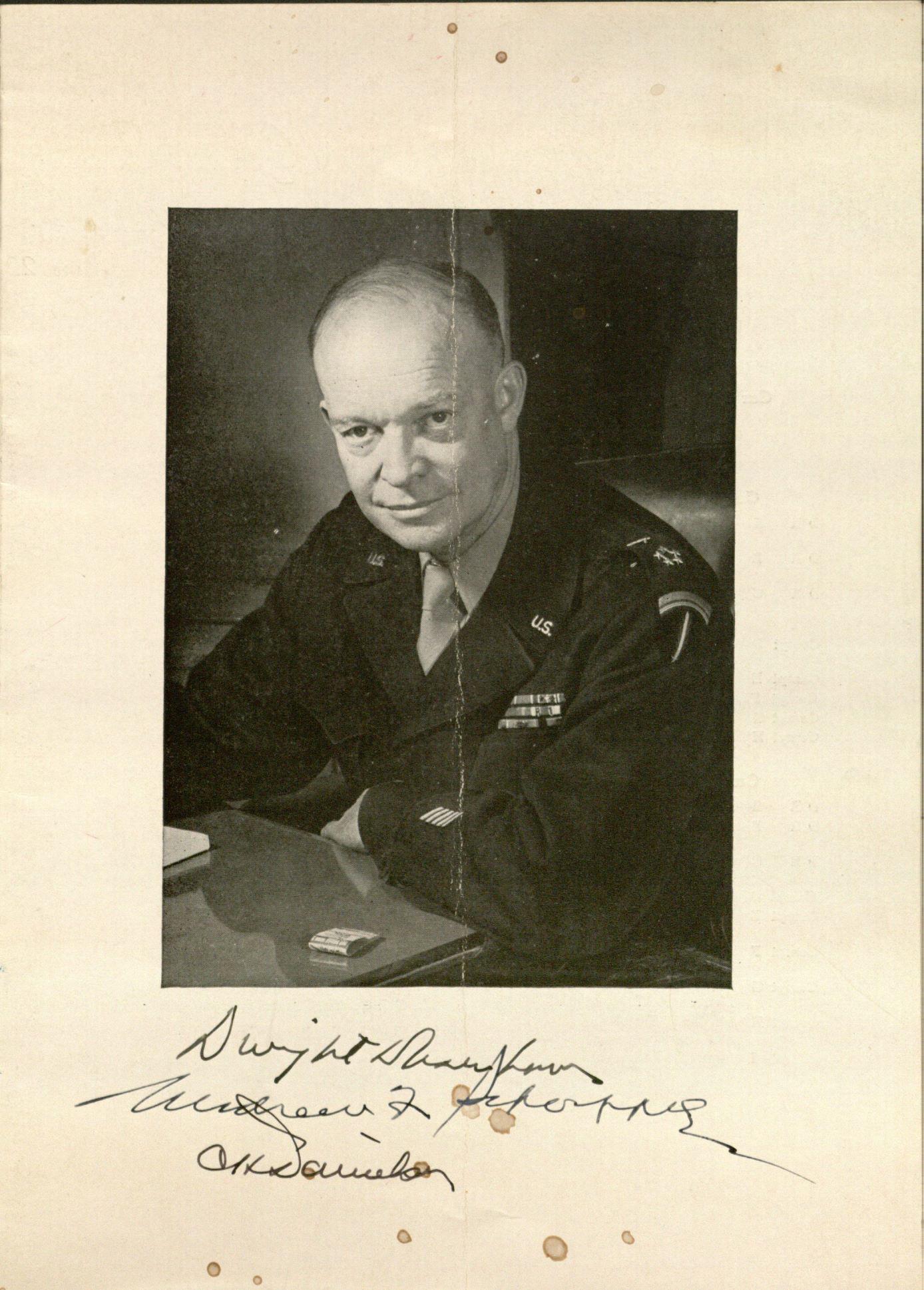
Eisenhower homecoming train brochure and menu front cover, signed by Dwight D. Eisehower.
Papers of Harry Darby, Kansas Collection, call number: RH MS 1345, Box 9, Folder 35. Click image to enlarge.
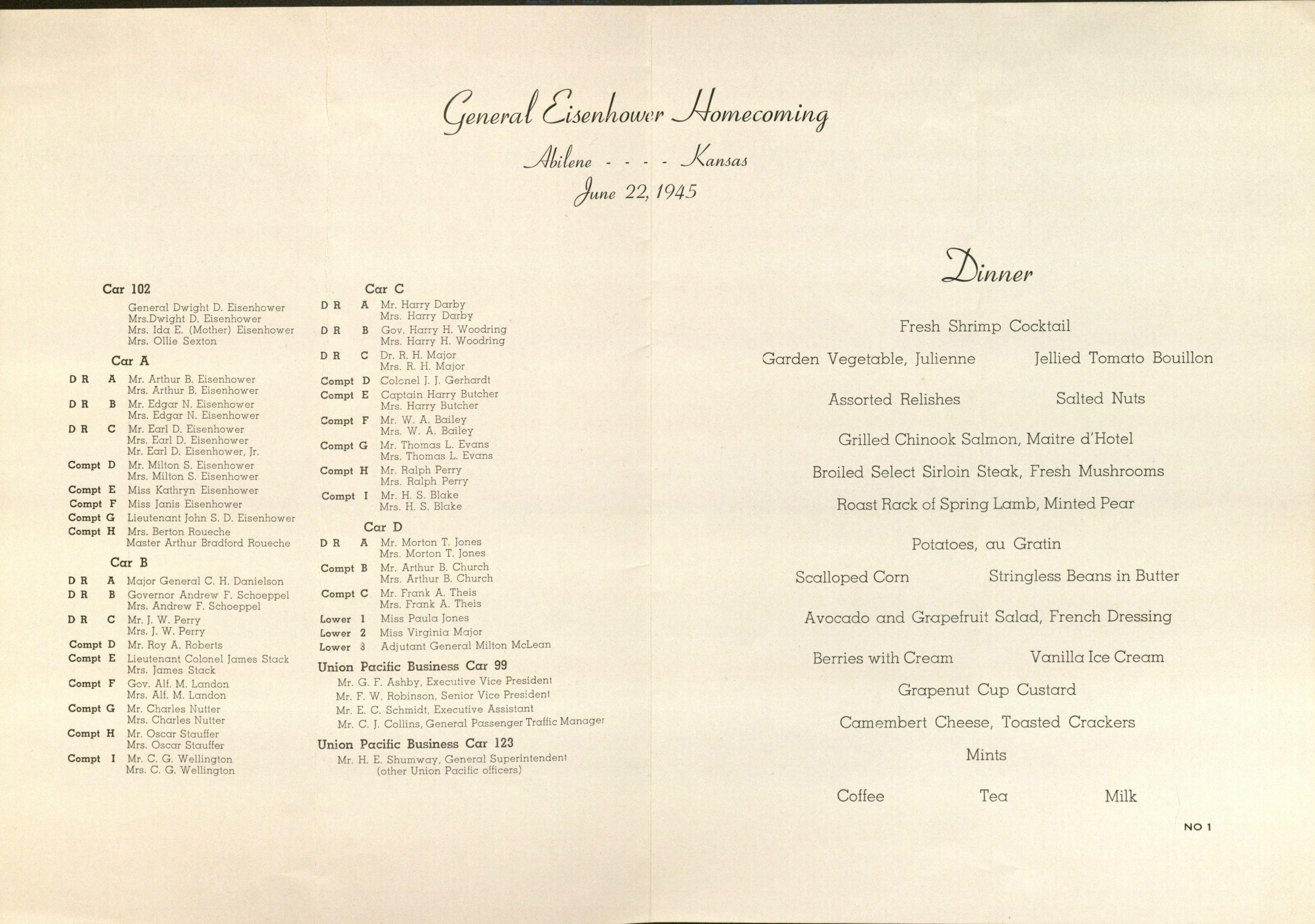
General Eisenhower homecoming train seating chart and menu, Papers of Harry Darby, Kansas Collection,
call number: RH MS 1345, Box 9, Folder 35. Click image to enlarge.
“Abilene’s Greatest Son Comes Home”, Abilene Reflector-Chronicle front page
from June 22, 1945. Kansas Collection, call number: RH H319. Click image to enlarge.


Article discussing General Eisenhower’s arrival by train titled “Ike is at Home”,
Abilene Reflector-Chronicle front page and page 6 from June 22, 1945.
Kansas Collection, call number: RH H319. Click images to enlarge.
Article describing the speech given by General Eisenhower to Abilene residents titled “Eisenhower Calls Friends to Realize Responsibility in United Effort for Peace”, Abilene Reflector-Chronicle front page from June 22, 1945.
Kansas Collection, call number: RH H319. Click image to enlarge.
Mindy Babarskis
Reference Specialist
Public Services

